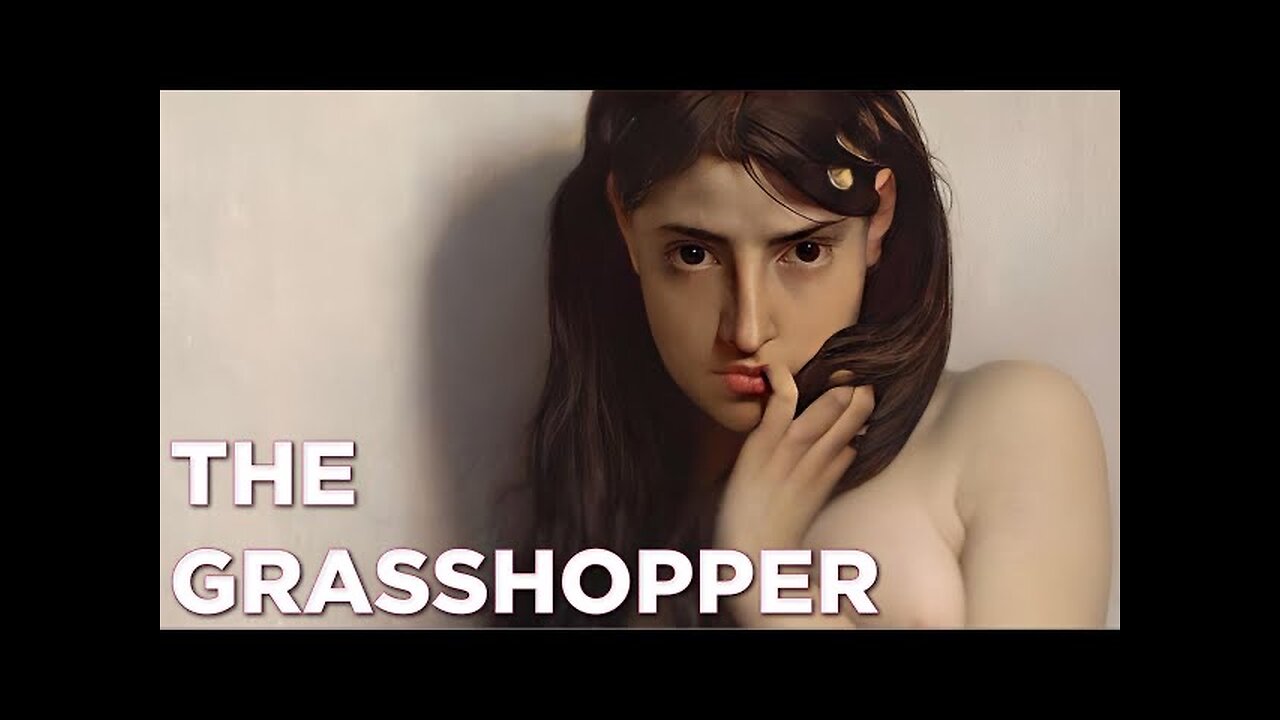Premium Only Content

Jules Lefebvre: The Grasshopper (1872)
https://danielearte.instabio.cc
A woman is depicted in the painting standing in front of a white wall. The woman is naked and she appears to be hungry as she bites her finger while staring at the viewer. She holds in one hand a white veil that is insufficient to cover her. Next to her is a plant that is losing its leaves; this is a sign that winter is approaching. The subject is derived from Jean de La Fontaine's adaptation of Aesop's fable "The Cicada and the Ant." When Lefebvre exhibited the painting at the Salon, he recited a verse from La Fontaine's version: "When the bee arrived" (When the cold north wind came). Aesop relates that during the summer, the ant worked to store food for the winter, while the cicada sang and danced. With the arrival of the autumn wind, the naked cicada realizes her vulnerability to a winter season as naked as she is. It is believed that Lefebvre was motivated to complete this work by recent events in French history, such as the defeat in the Franco-Prussian War of 1870-1871, Napoleon III's lack of preparation, the economic crisis, and the Paris Commune.
#danielearte
#onlineartgallery
#frenchpainter
-
 2:12:58
2:12:58
Robert Gouveia
3 hours agoSenator's Wife EXPOSED! Special Counsel ATTACKS; AP News BLOWN OUT
29.7K25 -
 55:07
55:07
LFA TV
1 day agoDefending the Indefensible | TRUMPET DAILY 2.25.25 7PM
4.89K1 -
 6:09:26
6:09:26
Barry Cunningham
10 hours agoTRUMP DAILY BRIEFING - WATCH WHITE HOUSE PRESS CONFERENCE LIVE! EXECUTIVE ORDERS AND MORE!
46.4K37 -
 1:46:37
1:46:37
Game On!
5 hours ago $2.51 earnedPUMP THE BRAKES! Checking Today's Sports Betting Lines!
19.9K -
 1:27:21
1:27:21
Redacted News
4 hours agoBREAKING! SOMETHING BIG IS HAPPENING AT THE CIA AND FBI RIGHT NOW, AS KASH PATEL CLEANS HOUSE
142K178 -
 1:08:28
1:08:28
In The Litter Box w/ Jewels & Catturd
1 day agoCrenshaw Threatens Tucker | In the Litter Box w/ Jewels & Catturd – Ep. 749 – 2/25/2025
77.7K42 -
 44:57
44:57
Standpoint with Gabe Groisman
1 day agoWill Byron Donalds Run for Florida Governor? With Congressman Byron Donalds
35.1K6 -
 1:06:25
1:06:25
Savanah Hernandez
4 hours agoEXPOSED: FBI destroys evidence as NSA’s LGBTQ sex chats get leaked?!
53.8K23 -
 1:59:58
1:59:58
Revenge of the Cis
5 hours agoEpisode 1452: Hindsight
49.7K5 -
 1:20:35
1:20:35
Awaken With JP
7 hours agoCrenshaw Threatens to Kill Tucker and Other Wild Happenings - LIES Ep 80
115K70